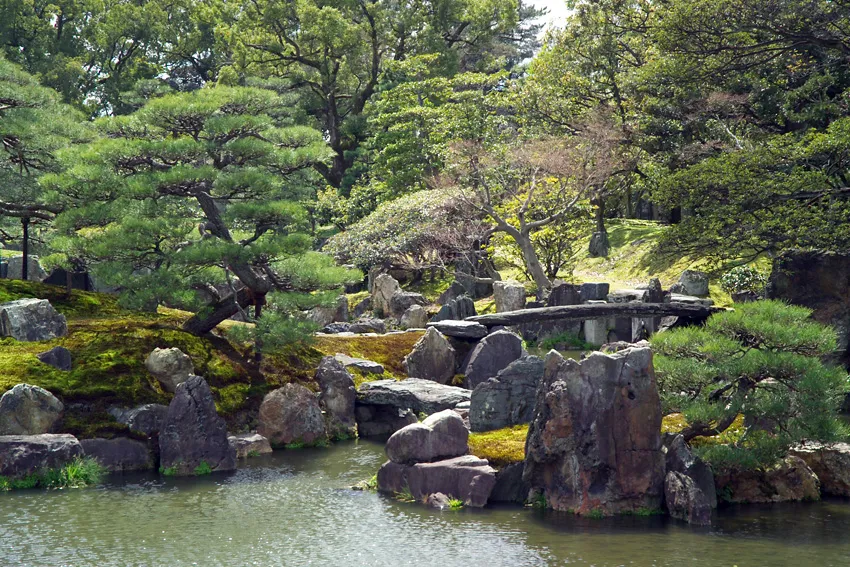

Ninomaru Garden / Nijo Castle
The Ninomaru Garden at Nijo Castle is one of the most representative gardens of the early Edo period, attracting many tourists for its beauty and historical value. This garden is adjacent to Ninomaru Goten, the main building of Nijo Castle, and retains its strong character as a prestigious daimyo's garden. The garden is said to have been designed by a famous Edo period gardener known as Kobori Enshu. His garden reflects the spirit of wabi and sabi, but is characterized by its grandeur and spectacular composition. The Ninomaru Garden was designed as a pond garden, with a large pond in the center and a series of paths, bridges, stone arrangements, and mountains built around the pond. These elements create a landscape that varies from one angle of view to another, offering visitors a seasonal taste of the garden. The historical background of the garden dates back to 1603, when Tokugawa Ieyasu built Nijo Castle. In particular, the garden was improved when the third shogun, Tokugawa Iemitsu, visited Nijo Castle to receive the emperor. The garden served as a space symbolizing the authority of the Edo shogunate and its importance as a political and cultural center of the time. In the garden, there are stone arrangements in the shape of cranes and turtles, which were placed as lucky charms symbolizing longevity and prosperity. These designs are considered not only aesthetic elements in the garden, but also have spiritual significance. The entire Nijo Castle is registered as a UNESCO World Heritage Site, and the Ninomaru Garden is also highly valued as a cultural asset. Visitors will be able to enjoy its serene and beautiful scenery while contemplating the deep philosophical and historical background of Japanese garden culture.